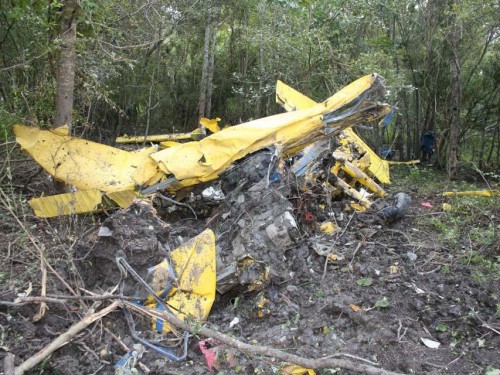Tuesday, June 15
June 15, 2010Thursday, June 17
June 17, 2010A report issued by the National Transportation Safety Board (NTSB) on June 1 proposes weather may have played a role in a deadly plane crash that occurred near the Houma-Terrebonne Airport last year.
Solomon Falgout, a Houma native, took off from the airport on Sept. 24 around 6 a.m. in his small 1979 Cessna 182Q. He worked regularly as a fish spotter for Daybrook Fisheries. According to information submitted on his last Federal Aviation Administration medical application, Falgout had logged nearly 20,000 hours of total flight time. The pilot’s logbook, however, was not recovered from the wreckage.
Because of prevailing weather conditions, cloud cover at 300 feet and seven miles of visibility, the flight had to be conducted under a special permissions request using visual flight rules. At 6:04 a.m., Falgout asked, “Is there any way I can get a [special clearance] to get up and see what it looks like right south of the field, and then if I don’t like it I can come back?” A local controller granted that request.
Just one minute later, at 6:05 a.m., Falgout sent his last transmission: “This is going to get thick in about an hour.” Repeated attempts to contact the pilot after that statement was sent were unsuccessful, said the report.
A witness told investigators that fog was present at the airport during takeoff. Another witness, about a mile from the plane’s point of impact, said heavy fog was in the area when he left for work at 5:50 a.m. So far, authorities have not found any evidence that Falgout obtained a weather briefing prior to his trip.
Officials from the NTSB also highlighted exerts in their report from the Federal Aviation Administration discussing spatial disorientation, a debilitating condition that can occur when pilots rely primarily on their vision to navigate.
“Sight, supported by other senses allows the pilot to maintain orientation, however, during periods of low vulnerability, the supporting senses sometimes conflict with what is seen. When this happens, a pilot is particularly vulnerable to disorientation,” it reads.
Falgout’s plane was not equipped to fly in weather conditions that solely require the use of navigational instruments.
Investigators have not yet determined an exact cause of the incident, but are expecting to issue a full report around June 24, said officials.
Remnants of the crashed plane piloted by Houma native Solomon Falgout lie in a wooded area just outside the Houma Airport. The National Transportation and Safety Board said weather could have been the cause for the crash. * FILE PHOTO






